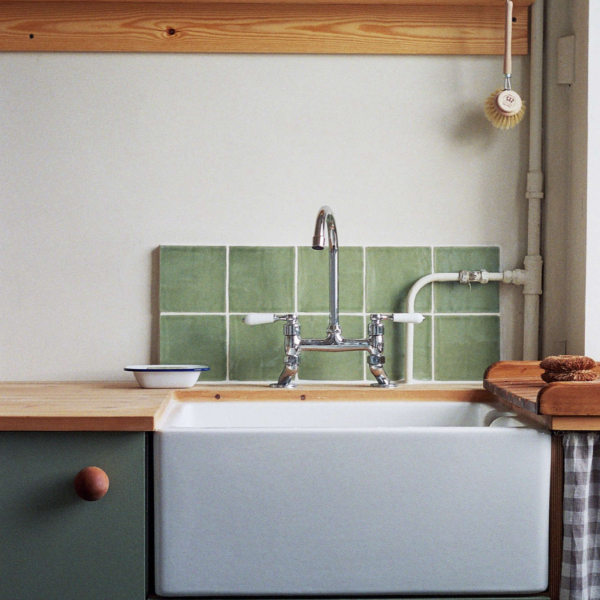A cut flower garden is one of the most rewarding spaces you can grow. I mean, who doesn’t love flowers?! Whether you plan to grow them to enjoy yourself, to give to friends and family, or even to sell and make a profit from, here’s how to start a cut flower garden from scratch.
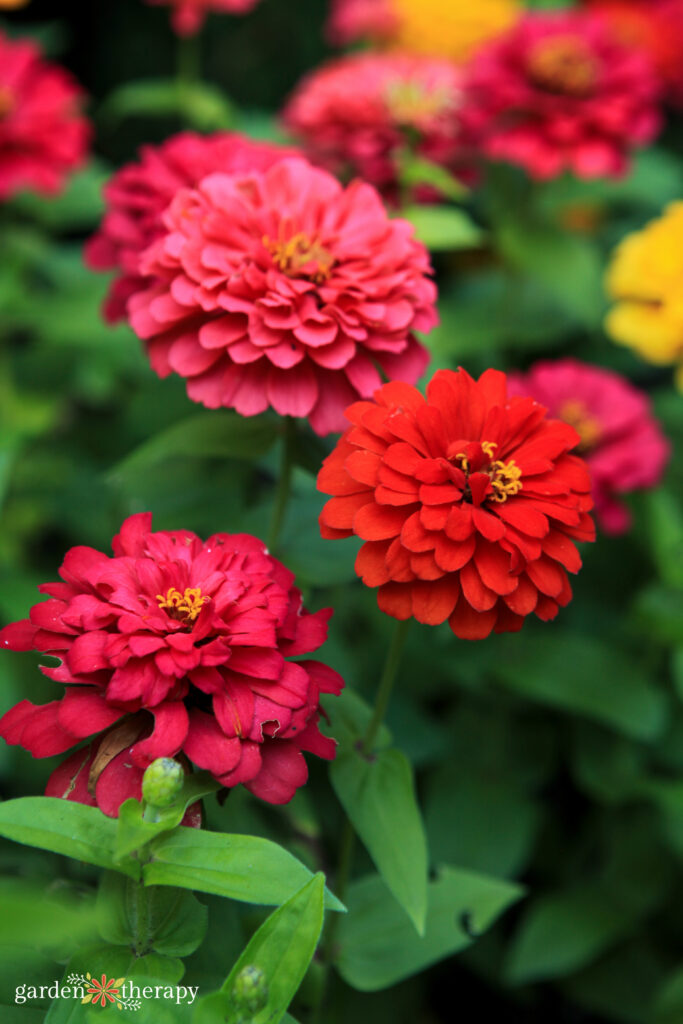
Sometimes, I can’t believe that I exist in a world where flowers grow. The fact that these beautiful-looking and even more gorgeous-smelling things exist naturally in nature is nothing short of a miracle.
While I don’t grow many cut flowers in my garden, I admire everyone who does. Flowers are one of the most in-demand crops and one of the more maintenance-intensive ones. But we can’t deny just how rewarding it is to harvest their blooms!
Today, I’m featuring one of the best cut flower gardening experts, Lisa Mason Ziegler. She owns The Gardener’s Workshop and has been growing flowers commercially since 1998.
Her new book, The Cut Flower Handbook: Select, Plant, Grow, and Harvest Gorgeous Blooms, is out now, and it’s an amazing resource for new and old cut flower gardeners alike.
Without further ado, let’s start designing a cut flower garden.
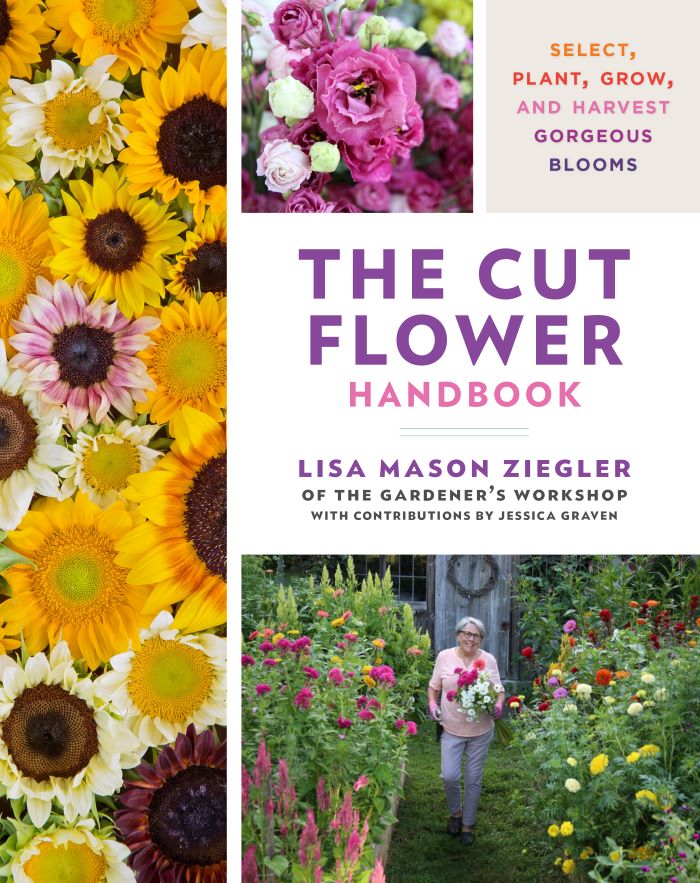
Quotes reprinted with permission from The Cut Flower Handbook: Select, Plant, Grow and Harvest Gorgeous Blooms by Lisa Mason Ziegler © 2024. Published by Cool Springs Press.
Choosing What Flowers to Grow
Before you get started with any physical preparations, it’s a good idea to think about what kind of plants you want to include in your cut flower garden.
Make a list of your dream flowers based on what you want to grow and what can realistically grow in your zone.
In her book, Lisa describes both warm-season and cool-season annuals. Both complete their lifecycle in a year, but they require different growing conditions.
“Warm-season tender annuals thrive when planted and grown in warm to hot conditions,” says Lisa. They include flowers such as amaranth, celosia, cosmos, hibiscus, marigold, sunflowers, zinnia, and more.
“Cool-season hardy annuals thrive when planted and grown in cool to cold conditions,” says Lisa. They include the likes of baby’s breath, bachelor buttons, carnations, feverfew, foxglove, larkspur, poppy, snapdragon, statice, sweet peas, yarrow, and much more.
Limit how many different types of flowers you grow in your first year or so. Plant only a few types, but plant them in abundance. Really nail down the conditions, timing, and care before you expand. Otherwise, you’ll be overwhelmed.
Check out this list of the best cutting flowers to include in your garden.
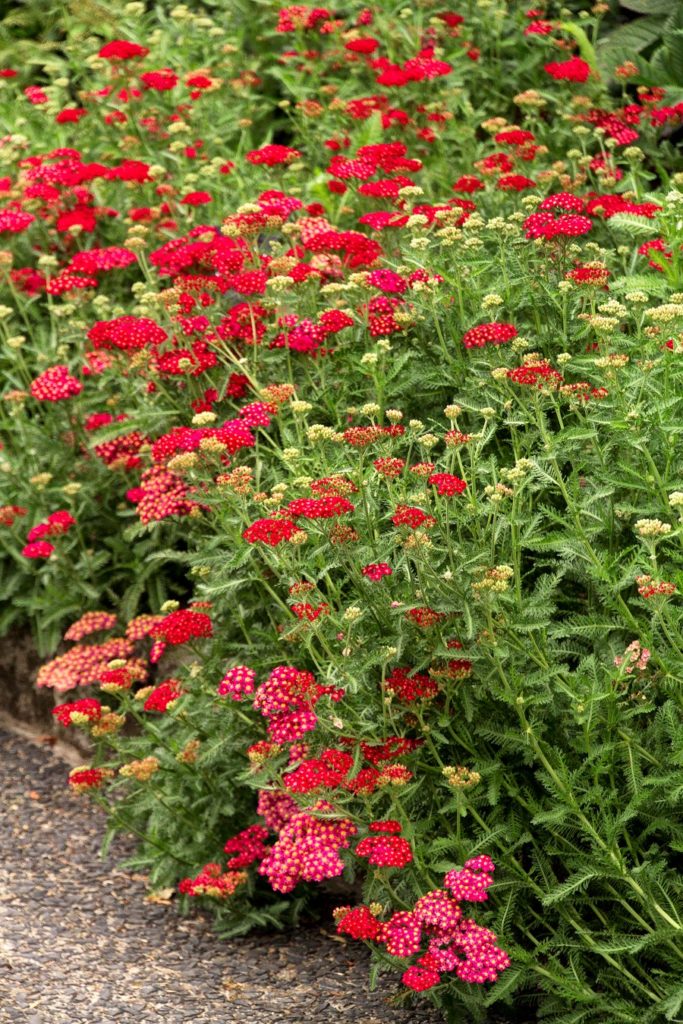
When to Plant Cut Flowers
It’s important to know whether or not you’re dealing with warm or cool-season annuals so you can plant them at the right time.
“Planting outside the recommended seasonal weather conditions can result in seeds and transplants that are shocked and stressed, which delays the sprouting and growing process,” says Lisa.
When you plant seeds too early, you either waste seeds that never sprout or end up with mediocre plants susceptible to disease and pests.
“Cool-season annuals have varying planting times, depending on the garden’s low winter temperatures,” says Lisa. “Finding the best planting times for your conditions may take a little time and practice, but it is worth it.”
Don’t skip out on this extra time just because these flowers may not be as straightforward. Some are planted in fall, others in winter, and some in early spring. They can get you some of the year’s earliest flowers.
As for warm-season annuals, you’ll want to pay attention to frost dates and temperatures. Lisa notes, “The weather signal I wait for to begin transplanting outdoors is the moment when nighttime air temperatures reach 60°F (15.5°C) or above with soil temperature at a minimum of 60°F (15.5°C).”
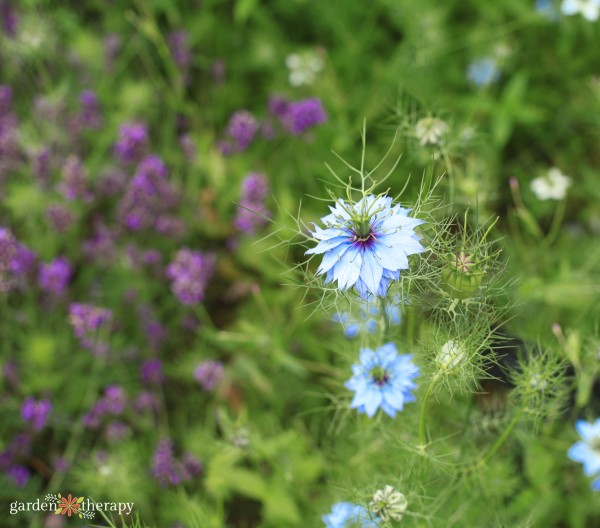
Succession Planting
I’ve always been a big proponent of succession planting. I use it for many of my annuals, including vegetables. But it’s also one of the best tools to use for a cut flower garden.
Succession planting is when you stagger planting seeds. So rather than start all your zinnia seeds at once, you start some now, sow more a couple of weeks later, and another batch two weeks after that.
If you plant everything all at once, they’ll bloom all at the same time. Succession planting allows you to stagger the harvest and make it much more manageable. It will also prevent some of your flowers from going to waste.
“To practice growing a three-season cutting garden, whether a small bed or an acre, you must remember that, to keep this garden producing and as weed-free as possible, plantings should be pulled once they begin to decline to make way for the next planting,” says Lisa.
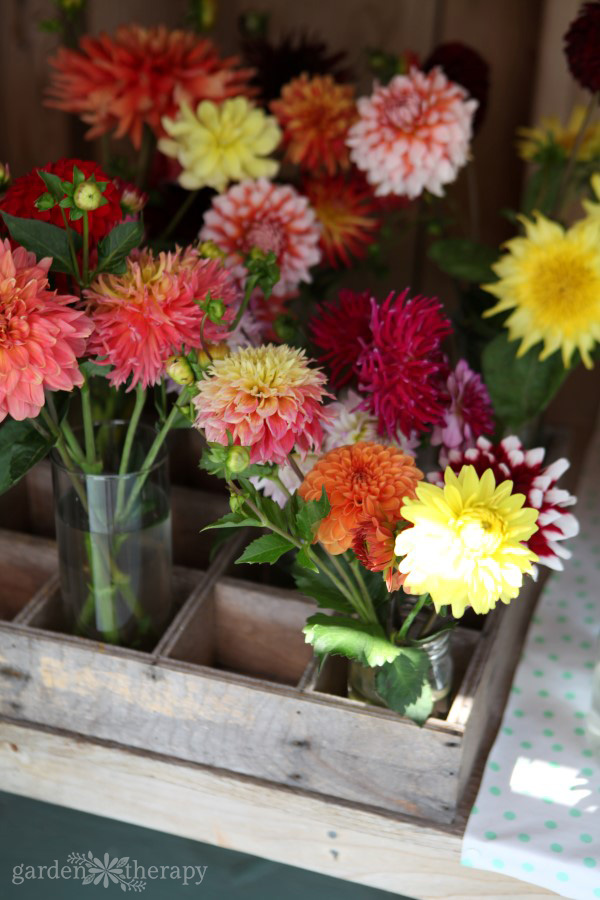
Choosing a Bed Location
Realtors and cut flower gardens have one thing in common…they’re always screaming location, location, location!
If you’re building a bed for your cut flower garden layout, you’ll want to make sure you’re choosing the right spot on your property.
Almost all cutting flowers require full sunlight. You’ll need plenty of sun to get as many blooms as possible, and to keep any disease from thriving in moisty, shady locations.
It’s also important to make sure your bed is accessible. Cut flowers are not low-maintenance, so you’ll need to make sure you can access them from all sides. Avoid placing your bed next to any structures, as this will make it difficult to access and block valuable sunlight.
Also, ensure your water source is nearby. You don’t want to have to lug around a hose every time you want to water your flowers or create a tripping hazard thanks to a drip irrigation trail.
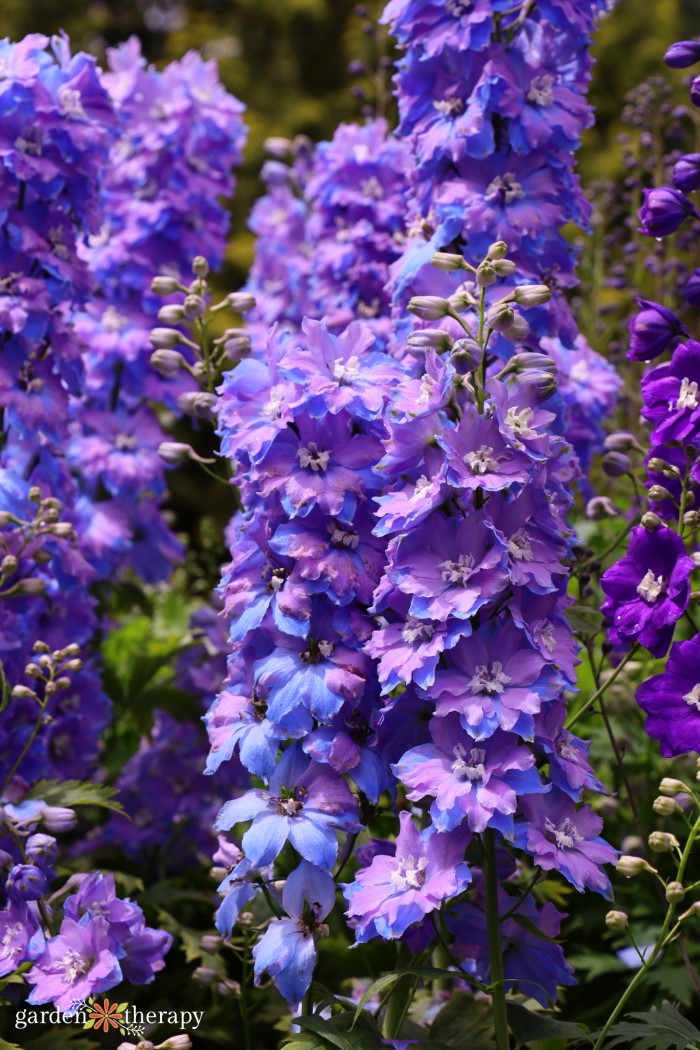
A Note on Bed Size
You don’t need much space to have a productive cut flower garden. In fact, when it’s smaller, you pay more attention to it and remember to harvest the flowers often. This results in more productive plants.
For a beginner cut flower gardener who is growing flowers at home, Lisa recommends having two beds, with each being 3 x 10 ft. (0.9 x 3 m).
“Narrower beds are easier to reach into the center of and are low where the harvest cut is made, helping prevent us from stepping on the bed during harvesting,” says Lisa. “A 36-inch (90 cm) wide bed works well, with my beds getting narrower as I age to reduce the reaching and bending distance.”
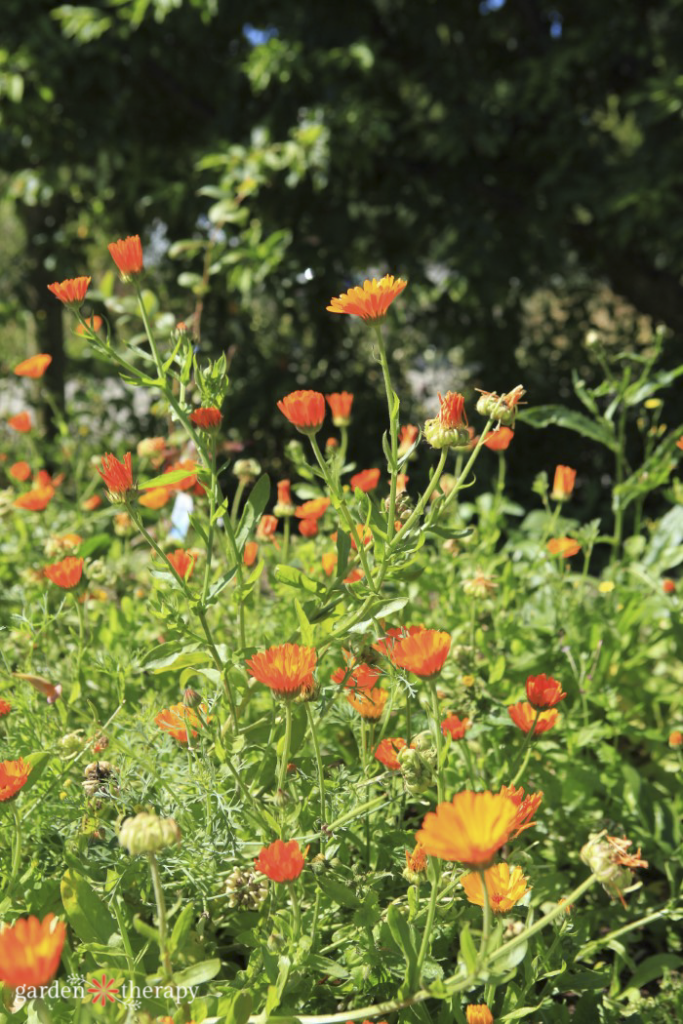
Preparing Your Cut Flower Garden Bed
Most cut flower gardeners grow their flowers in raised beds. “I grow in raised beds because it is easier to improve drainage and soil quality,” says Lisa. “Beds can have either framed sides made with lumber or just mounded soil with no framed sides.”
You can follow my instructions for a raised bed if you don’t already have one.
The next most important aspect of a cut flower garden is soil quality. Poor soil conditions can affect output. Flowers require soil with plenty of nutrients, good drainage, and the ability to retain moisture.
Keeping up soil quality is an ongoing process. Add natural soil amendments and compost, as well as fertilizer, if necessary, to keep up the soil conditions.
Mulch is also great for feeding the soil, preventing weeds, and retaining moisture. When you disturb the soil, you bring weed seeds to the surface and allow them to sprout. Always apply a layer of mulch afterward to prevent these weed seeds from popping up.
It’s also a good idea to set up irrigation. While the flowers should be able to tolerate some drought, a watering system will be necessary. Rather than hose everything daily, it’s best to set up irrigation.
“Low pressure irrigation systems like driplines and T-tape are long lasting, easy to install, and use little water,” says Lisa.
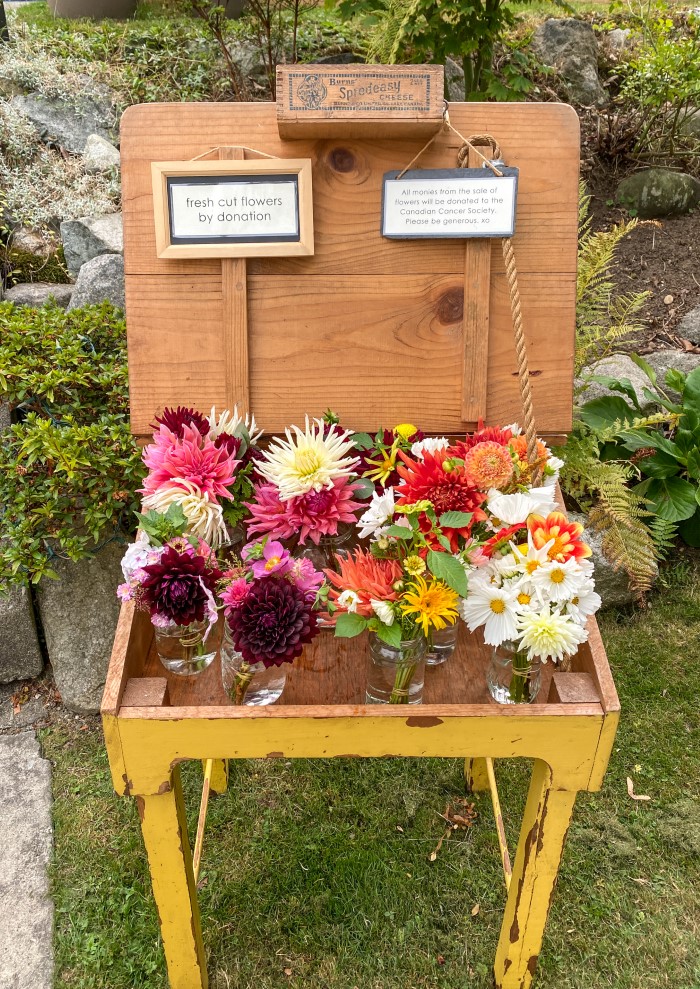
FAQ About Cut Flower Garden Layouts
How much space do you need for a cut flower garden?
The recommended bed size for home gardens is 3 x 10 ft. (0.9 x 3 m). Go smaller, but don’t go larger. Anything larger will be difficult to access and maintain. You want to be able to reach all the flowers to allow you to harvest them easily.
Can you do a cut flower garden in pots?
If you plan to grow flowers to sell or for any commercial reason, it will be difficult to grow enough flowers in pots. But as a home gardener, you can grow many of these flowers in pots and cut them to bring inside. Just make sure the pot is deep enough, has quality potting soil, and has drainage holes.
How do you prepare a bed for cut flowers?
The more fertile your soil is, the better. Adding in organic amendments such as compost, manure, dried leaves, and green manure will help to increase the soil quality. They increase nutrient levels, retain moisture well, and provide good drainage.
It’s also recommended to add a layer of mulch. This will prevent weeds from growing and help retain moisture. Landscaping fabric acts in the same way.
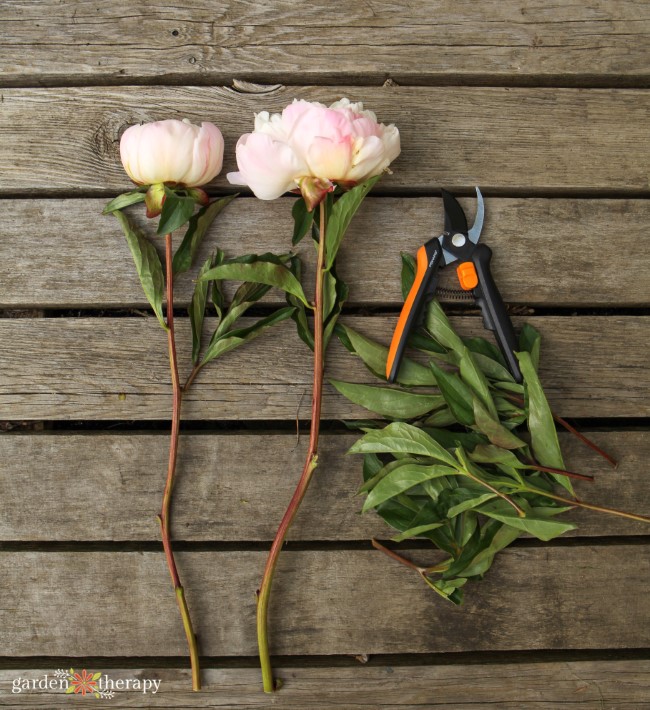
And that’s everything about setting up a cut flower garden layout! The next steps are to actually start your seeds and care for them. For a complete guide on how to design a cut flower garden and for more resources on specific flowers, be sure to check out Lisa’s The Cut Flower Handbook.


